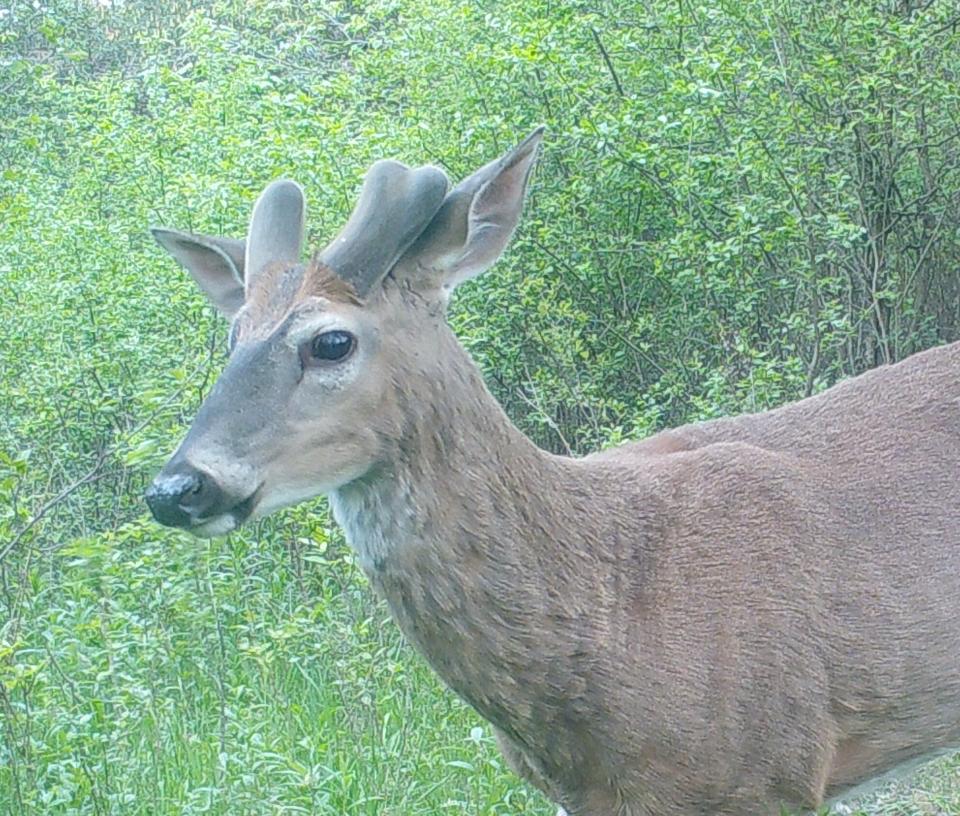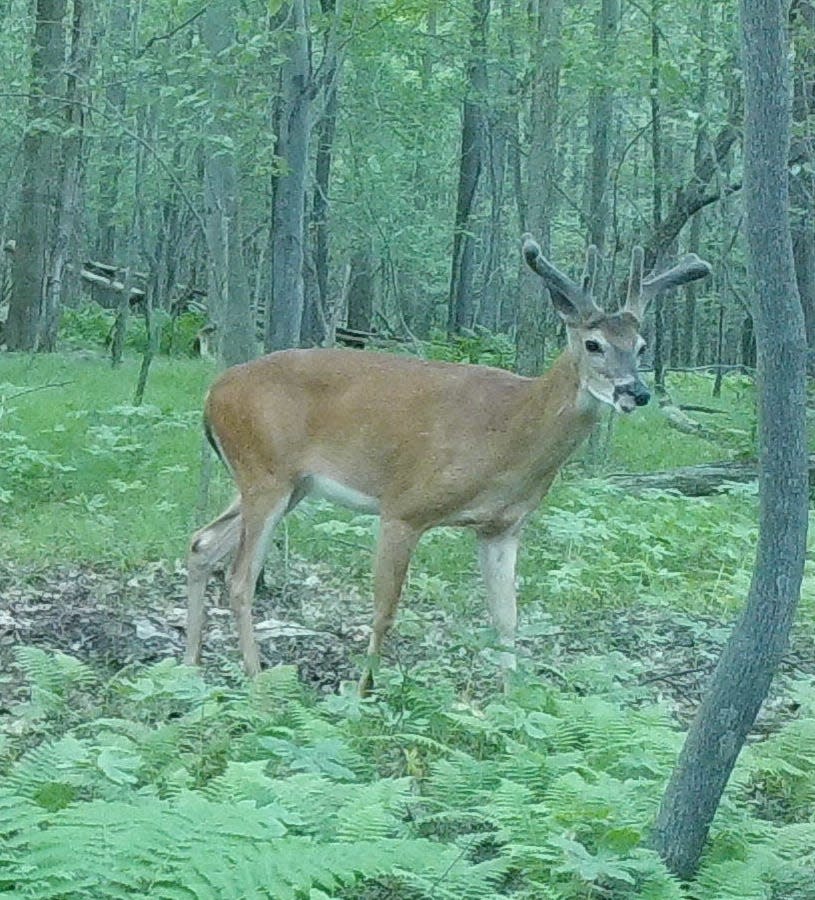Velvet deer antlers are growing quickly. Here's how they change throughout the year
A whitetail buck's antlers in springtime and summer are anything but the sharp, white, iconic, bony headgear we imagine.
Bucks are "in velvet" at this time of year and their antlers are undergoing an amazing growth rate, covered with a mysterious substance we call antler velvet.
Antlers, when in velvet at this time of year, are some of the fastest growing cellular material of all animals.
And because of that, cancer researchers are among many scientists that are using antlers to delve into the mystery of cellular growth hoping for new breakthroughs in the treatments of aliments of all kinds such as osteoporosis.

Antler velvet is marketed as a panacea for many aches and pains from arthritis to healing torn ligaments and tendons in professional athletes, due in part to its high amount of IGH (Insulin-like Growth Hormone) banned in many sports because it stimulates HGH, which is our Human Growth Hormone.
Typically, antler velvet, like so many natural extracts, has been in some cases oversold, promising everything that people want to hear and believe, from hair and muscle growth to a cure on the one hand for insomnia, and on the other as a booster for sexual efficacy.
Currently, deer antler velvet is sold as teas, extracts, capsules and pills, easily available on the worldwide web, if not local health food stores.
Antler velvet has been used as a medicine for thousands of years in different cultures, and is obtained from bucks during their velvet growth stage. Deer farms currently market antler velvet worldwide. Some of the major producers are China, Russia, North Korea and New Zealand, as well as in North America.
And like many other natural placebos, antler velvet has reportedly no side effects, unless taken in massive amounts, which has been reported to create alimentary canal issues and lots of gas.
How buck antlers change throughout the year

Deer antlers when in velvet are soft and easily damaged. When broken, it will bleed profusely.
That may be one reason why larger-antlered bucks at this time of the year (summer) are so reclusive and rarely seen. It stands to reason that if bucks in velvet were rushing around in the woods, they could damage these antlers, so crucial for fighting and breeding status in just a few months hence.
Usually, by mid-August, our whitetail buck's antlers have all but quit growing.
In the final weeks of August, usually bucks antlers begin to "harden up." And by early September, most bucks have lost the soft velvet covering, unsheathing the bone-white, lethally sharp fighting weapon.
Once shed of velvet, bucks spar and test their antlers on convenient branches, saplings, trees, and on each other once they, as deer hunters say, "are in hard horn."
Deer do not start growing their antlers until May, when the first bumps appear on their heads where they dropped their antlers from the previous season.
More: May fawns tell us about the 2022 rut, 'flood the market' and protect the population
It takes a lot to generate antlers
Researchers have determined that Cervids (deer, elk, moose) actually undergo a sort of osteoporosis by pulling minerals and elements out of their bones to fuel rapid antler growth.
Antler genesis requires large amounts of calcium, magnesium and other minerals to form that much bone so quickly.
In fact, researchers have determined that deer deplete the bone mass from their sternum and chest to provide the raw material for their antlers.
This annual Cervid osteoporosis has been linked to the extinction of the largest deer to ever walk the planet, the Irish Elk which stood almost seven feet high at the shoulder. But by the end of the last Ice Age, as the climate changed, the greatest racked deer ever became extinct partly because it could not replenish its bone mass.
More: The time of the fly fisher is here. Here's some simple tips to land a trout this summer
And though we often use the term “horns” interchangeably with antlers, it’s technically incorrect.
Horns and antlers are different.
Goats, sheep, antelopes, and other Bovids grow horns, covered with keratin, the same substance in our fingernails. And often both males and females of a species grow horns, such as cows.
But certain domestic Bovids (sheep, goats) are being selectively bred to be “polled,” that is, so the females do not have horns.
— Oak Duke writes a weekly column.
This article originally appeared on The Evening Tribune: deer antlers change over the year from velvet to hardened up

